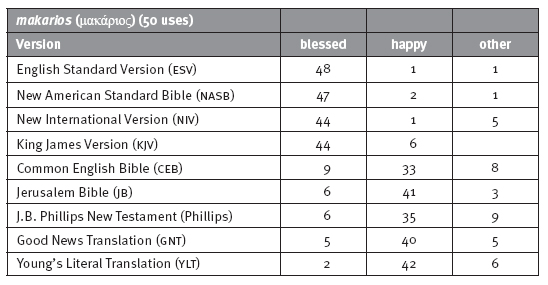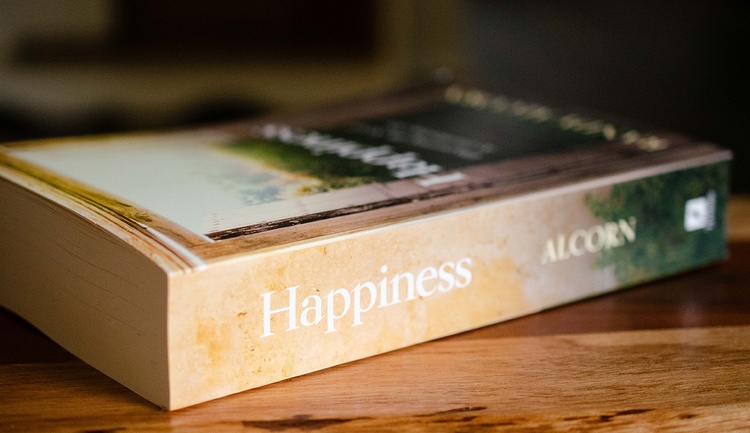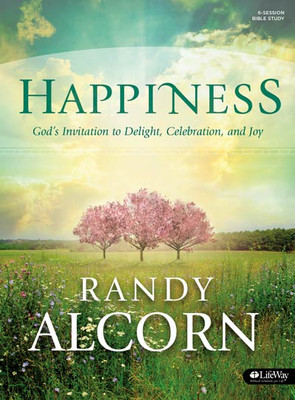These are the diagrams and charts in Randy Alcorn's book Happiness, referenced here primarily for listeners of the Audiobook. The appendices are available as downloads above.
Chapter 5, Page 42, Diagram 1
Diagram 1 depicts the contrast between joy and happiness as portrayed by many Christians. Joy, they suppose, is something substantial yet lacking emotional dimension. Happiness is seen as lightweight and temporary—a cloud soon blown away by the wind of circumstances.
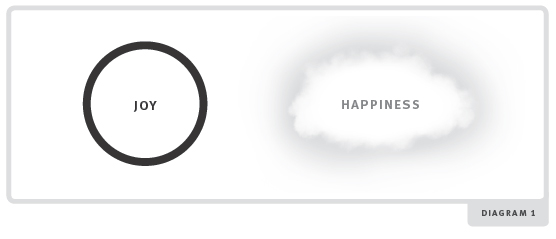
Chapter 5, Page 42, Diagram 2
The contrast can be further portrayed as in diagram 2, with joy as three dimensional—something with depth. Happiness, meanwhile, is allegedly one dimensional and superficial.
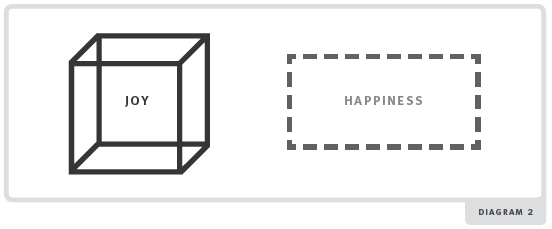
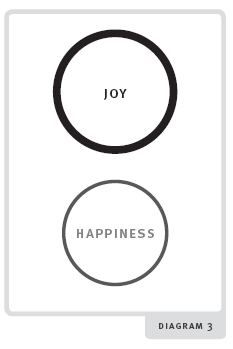
Chapter 5, Page 43, Diagram 3
Diagram 3 shows joy and happiness as commonly seen by evangelical Christians (but few others). The two separate circles show joy in the upper position—closer to Heaven, further from Earth—and thereby superior to happiness. Happiness is lower, smaller, demoted, and inferior—earthly, not heavenly. (Again, this is not my position but the predominant one among many Christians.)
If these three views of the relationship between joy and happiness are wrong—and I’m convinced they are—then what is the right view? According to the vast majority of the usages of these two words in (1) English history, (2) English literature, (3) Bible translations, and (4) English dictionaries, the words are synonyms with predominantly overlapping meanings. They have far more in common with each other than not. Hence, I depict them as two predominantly overlapping circles.
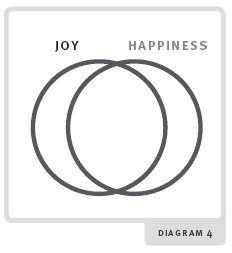
Chapter 5, Page 43, Diagram 4
This portrayal in diagram 4 stands in stark contrast to the modern evangelical belief about happiness—the one I was taught as a new Christian and have read and heard throughout my life. (I am an evangelical, so my issue isn’t with evangelical theology in general but with this particular viewpoint on joy and happiness.)
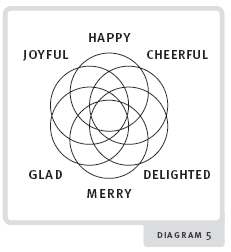
Chapter 5, Page 43, Diagram 5
This final illustration of overlapping word meanings includes not only happy and joyful, but also glad, cheerful, delighted, and merry.
Chapter 10, Page 90, Diagram 6
In diagram 6, the person depicted as experiencing happiness may not realize that the entire circle of human happiness exists within the infinitely larger circle of God and his happiness.
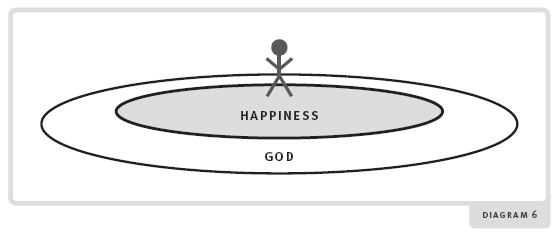
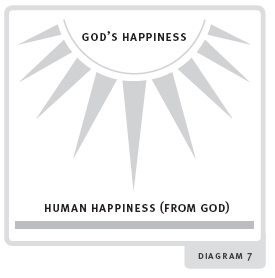
Chapter 19, Page 166, Diagram 7
WHERE DOES THIS THERAPY CALLED LAUGHTER COME FROM?
Scripture says of Jesus, “By him all things were created” (Colossians 1:16). Laughter comes from the Creator, who made us in his image! His laughter preceded our own laughter and is the ongoing source of it. We can be happy only because he’s happy; we can laugh because he laughs.
Human beings are recipients of happiness, not sources of it. All our delight and gladness come from God.
We cannot divorce our happiness from God’s happiness, because his happiness is foundational to ours.
Chapter 20, Page 180, Diagrams 8 and 9
Diagrams 8 and 9 reflect the overlapping meanings of the Hebrew and Greek words for happiness in Scripture. There are far more words for happiness than depicted in eachdiagram. To be complete, the Hebrew diagram would need three times more circles, and the Greek about two times more.
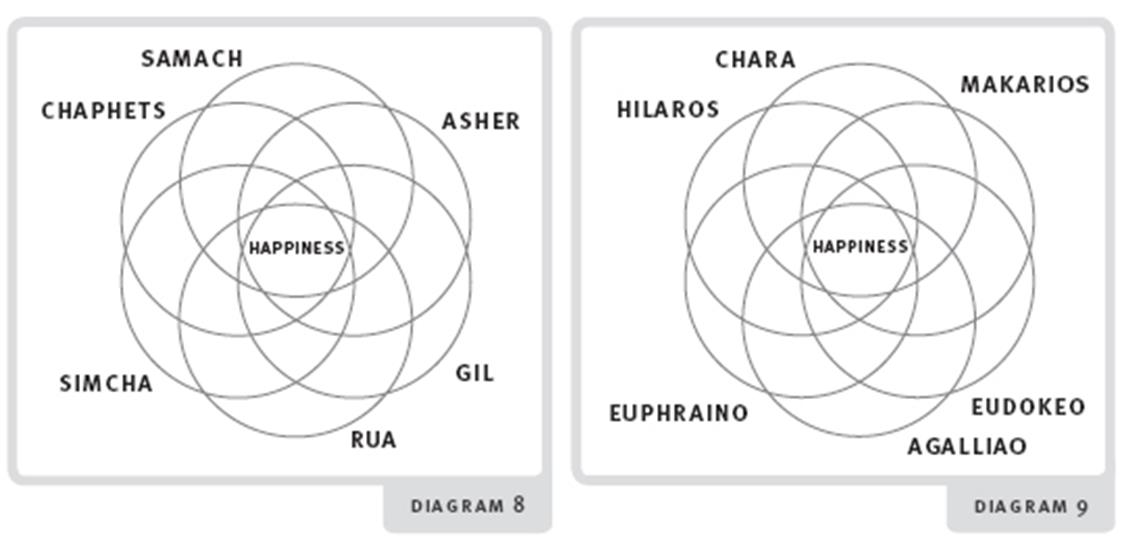
Chapter 22, Page 198, Table 1
The following table demonstrates how asher is translated in thirteen different Bible versions, with the numbers representing the number of times that asher is translated “blessed” as opposed to “happy”:
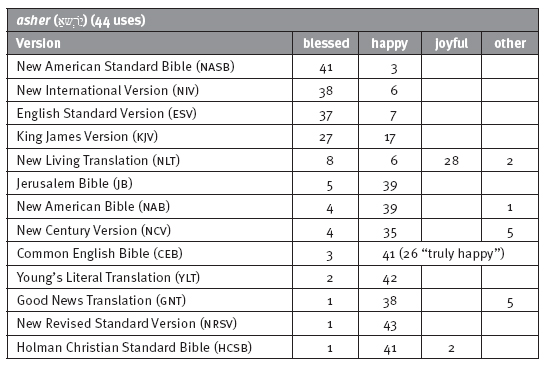
Chapter 22, Page 200, Table 2
The following table shows how makarios is translated in different English versions.
You’ll see how dramatically the versions are split in their rendering. If blessed were a synonym of happy for modern readers, this wouldn’t matter much. (It would be no more significant than some versions using sanctified and others holy.) But because blessed is no longer a synonym for happy, the happiness connotations of makarios, like asher, are lost in many English translations, buried under the word “blessed.”
